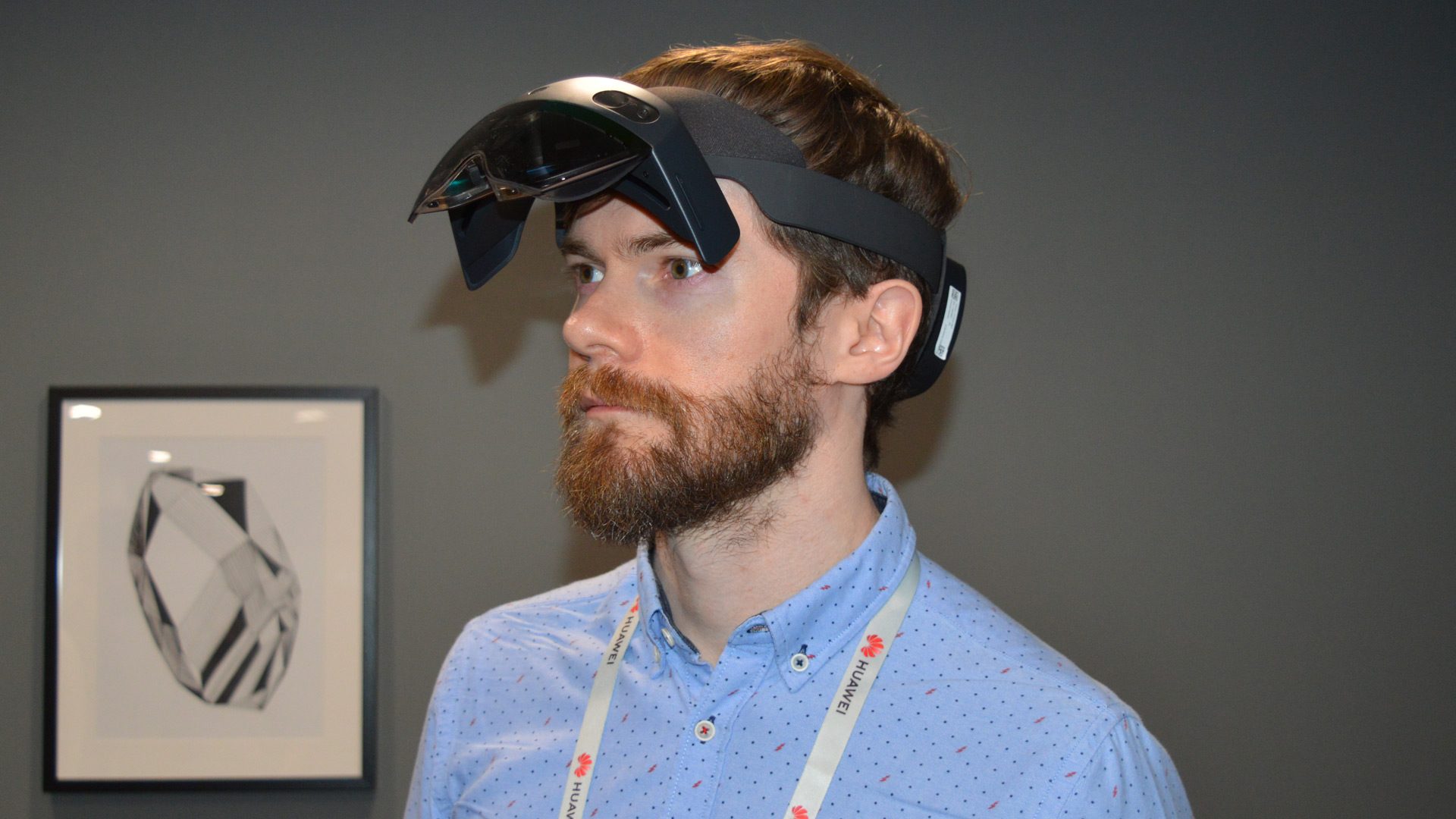Field of View
Now here’s where I’m supposed to invent a fuzzy, imperfect metric to help sell the size of the FOV, except I shouldn’t. Before the big consumer VR push in 2016, head-mounted display manufacturers used to use these sorts of gimmicks to communicate FOV (“it’s like looking at a 200-inch screen 15 feet away!”) and I just don’t think that does it any amount of justice. So while I can’t say one way or the other whether it truly achieves the promised 52 degree diagonal field of view, or two times the FOV area than the previous HoloLens, the headset’s FOV is approaching what I’d call ‘really quite usable and not terribly annoying’ (let’s call it RQUNTA for short).
The display’s most noticeable cut-off point between the physical environment and the augmented reality view is at the display’s bottom edge; the left and right portions of the display blur somewhat as they near the periphery of the plastic outer shield. That’s not to say it takes up your entire horizontal FOV—far from it. The physical design of the headset sets a few expectations that glasses wearers will probably recognize, namely the acquired ability to only view the external world from within the confines of the frame. HoloLens 2’s field of view fills more of that already limited area in all respects over its predecessor. (Side note: glasses technically fit underneath the headset. Please clap.)

While the bottom edge of the display was plainly visible, the top horizontal edge was much easier to ignore. The block of depth-sensing cameras and computer hardware housed in the portion of the headset above your brow creates a static visual barrier which is easier to mentally ignore, compared to the bottom of the FOV which goes right from display to air. Because HoloLens 2 doesn’t block out your real peripheral vision you can still peek out the sides and bottoms of the display, which makes more apparent that there’s a sudden edge to the augmented imagery.
On the flipside, Magic Leap seems to take purposeful advantage of this fact by limiting your full human field of view all the way around with a ‘goggles’ style form-factor which means a larger relative portion of your (physically truncated) field of view is taken up with the AR display.
That’s a long way of saying: the less optically intrusive frame of HoloLens 2 might make the field of view seem a bit smaller than that of Magic Leap, but actually the two are almost identical in size. For enterprise and industrial use-cases (which is the stated focus of HoloLens 2) the more open design is a benefit exactly because it doesn’t truncate your natural field of view as much.
Remote Collaboration & Enterprise Focus
With my first demo over, it was time to head on to my second Bentley-branded experience. Here I mostly revisited concepts I learned before like manipulating various building models and fiddling with switches, although the key take-home here was that multiple headset users could collaboratively view and interact with these models while in the same physical space. This, alongside the concept that users wouldn’t necessarily need to even be in the same country (but could virtually interact together in the same way), was HoloLen 2’s unique selling proposition that many of the other partner companies are tapping into.
Microsoft is focusing on enterprise and industry right now for good reason. At a hefty $3,500 price tag (or 28 easy monthly payments of $125), HoloLens 2 is undoubtedly outside the range of anyone but businesses looking to cut costs on the sort of highly specialized and collaborative work that would normally mean flights, hotels, and time spent using 2D viewing formats for inherently 3D work.
– – — – –
It’s more than an issue of price though. At the present moment, AR headsets—Hololens 2 included—have plenty of barriers to cross before John Q. Public will put one on and go about their daily errands. Even at an FOV approaching an acceptable size, the augmented reality headsets of today are best used in rooms that have been pre-mapped and are ready to serve up the sort localized content that will keep you indoors and close to a wall charger (and WiFi) where the headset feels most at home.
While we’ve yet to approach the true promise of all-day, on-the-go AR in this product cycle, well-funded companies like Microsoft are investing into these early steps because there’s a fairly clear case for a immediate return on investment in the enterprise space, while beginning down a path of proliferating the Windows platform onto AR products and platforms that eventually wind up in the hands of consumers too.






